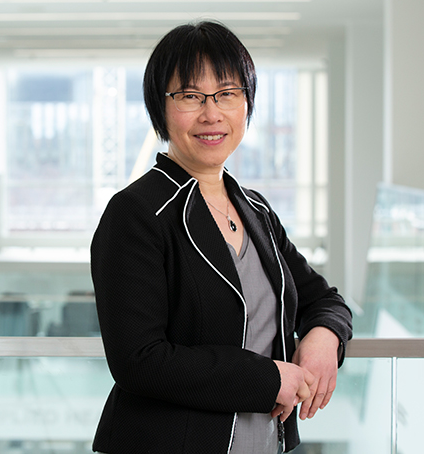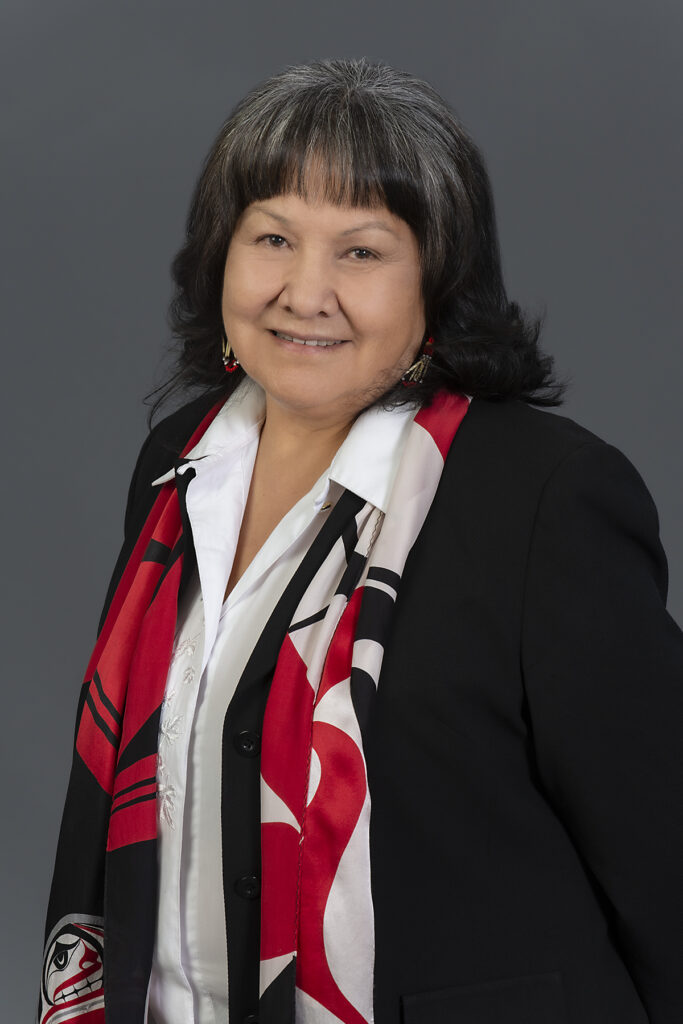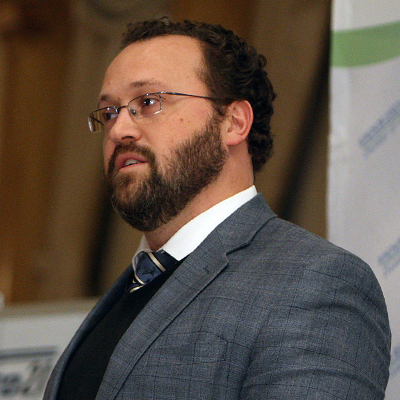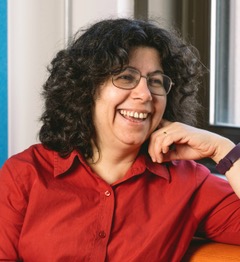Research Spotlight: Technology and Healthcare

Direct-to-consumer genetic testing, affordable virtual reality gaming for home use, AI-enabled home appliances and mRNA vaccines developed in quick response to a global pandemic have become part of daily life.
These technologies are among those revolutionizing the way healthcare is delivered and are giving rise to innovative and productive collaborations between clinicians, biologists, computer scientists and industry.
mRNA Technology
In 2023, the Nobel Prize in Medicine was awarded jointly to Katalin Karikó and Drew Weissman for their discoveries that enabled the development of effective mRNA vaccines against COVID-19. As noted by the Nobel Prize organization, “Through their ground-breaking findings, which have fundamentally changed our understanding of how mRNA interacts with our immune system, the laureates contributed to the unprecedented rate of vaccine development during one of the greatest threats to human health in modern times.”
Although messenger RNA, or mRNA, was discovered in the early 1960s and research into how mRNA could be delivered into cells was developed in the 1970s, it wasn’t until 2020, when COVID-19 became a global pandemic, that the first mRNA vaccine was made widely available. Thanks to advances in nanotechnology, where lipid nanoparticles were developed to wrap mRNA and allow entry into cells, the first mRNA vaccines were developed against the Ebola virus. This milestone, combined with decades of research and huge increases in funding released during the pandemic, allowed for the worldwide release of the first mRNA COVID vaccine.
Because mRNA vaccines are made in a lab using easily available materials, these vaccines are developed quickly and can be tested via large-scale clinical trials to demonstrate their safety and effectiveness. These vaccines can also be quickly modified to address new virus variants.
The ability to quickly develop very effective vaccines through the use of mRNA for COVID has spurred the development of additional mRNA vaccines for use in HIV, flu, Zika, rabies and to trigger the immune system to target cancer cells.
Virtual Reality/VR
American computer scientist and visual artist Jaron Lanier coined the term “virtual reality” in 1987. Lanier and human-computer interaction pioneer Thomas G. Zimmerman left Atari in 1985 to found VPL Research, the first company to sell VR goggles and wired gloves.
VR provides an immersive sensory experience that digitally simulates environments for applications in entertainment, education, architectural and urban design, engineering and robotics, archaeology and, increasingly, healthcare. Researchers and clinicians are exploring the use of VR to manage psychological and physical conditions including stress, anxiety, depression, dementia, autism, pain management and rehabilitation.
Healthcare providers have sought alternatives to opioids to address chronic pain as opioid addiction and death has become a worldwide crisis. In 2021, the US Food and Drug Administration authorized the marketing of a prescription home-use VR device to manage chronic low back pain.
At the Pain Studies Lab at Simon Fraser University in Vancouver, Dr. Diane Gromala, Canada Research Chair in Computational Technologies for Transforming Pain, leads a research group that conducts patient-centred research to study, invent and design technology systems for people who live with chronic pain. Systems and techniques employed in clinics and in patients’ homes include immersive virtual reality, immersive games, personal data capture and visualization, physiological sensing, wearable computing and mobile technologies and systems.
According to the World Health Organization (WHO), anxiety disorders are the world’s most common mental disorders, affecting 301 million people in 2019. The WHO predicts that by 2030, mental health conditions will be the leading cause of disease burden worldwide. Anxiety has traditionally been treated by a combination of psychotherapy and medication. Virtual reality is now being integrated with traditional therapies, safely immersing patients in a therapeutic environment to practice mindfulness, paced breathing and calming distraction to cope with anxiety and stress.
Virtual Reality for Supporting the Treatment of Depression and Anxiety: Scoping Review, a paper by researchers in New Zealand and China published in the peer-reviewed journal JMIR Mental Health in 2021 noted: “Most studies demonstrated the use of VR to be effective for supporting the treatment of anxiety or depression in a range of settings and recommended its potential as a tool for use in a clinical environment.”
Artificial Intelligence and Machine Learning
From disease detection and treatment recommendations to drug discovery and patient engagement, AI and machine learning promise to be game changers in healthcare. At the same time, governments around the world are concerned about the risks of AI. Representatives from 28 countries from across the globe including Canada, the UK, the US, Africa, the Middle East, Asia and the EU met in the UK in November 2023 and identified, in the Bletchley Declaration, “the urgent need to understand and collectively manage potential risks through a new joint global effort to ensure that AI is developed and deployed in a safe, responsible way for the benefit of the global community.”
The World Health Organization (WHO) has noted that AI tools have the potential to transform the health sector by strengthening clinical trials, improving medical diagnosis and treatment and enhancing the skills of healthcare professionals. In response to the increasing use of AI for health, the WHO has released a new publication listing key regulatory considerations and emphasizing:
- the importance of establishing AI systems’ safety and effectiveness;
- rapidly making appropriate systems available to those who need them; and
- fostering dialogue among stakeholders, including developers, regulators, manufacturers, health workers, and patients.
Enhancing the reliability and accuracy of AI-enabled diagnosis via complementarity-driven deferral to clinicians, a joint paper by Google DeepMind and Google Research published in Nature Medicine in July 2023, proposes Complementarity-driven Deferral-to-Clinical Workflow (CoDoC), an add-on tool for human-AI collaboration that learns when to trust a predictive AI’s diagnosis or defer to a clinician. CoDoC learns to establish the reliability of a predictive AI model as compared to a clinician’s decision and is designed to be used by non-machine learning experts.
According to Krishnamurthy Dvijotham and Taylan Cemgil, on behalf of the CoDoC team, “CoDoC is a promising example of how we can harness the benefits of AI in combination with human strengths and expertise. We are working with external partners to rigorously evaluate our research and the system’s potential benefits. To bring technology like CoDoC safely to real-world medical settings, healthcare providers and manufacturers will also have to understand how clinicians interact differently with AI, and validate systems with specific medical AI tools and settings.”
An example of the use of AI to bring information to patients is AskEllyn.ai, which launched last week in Waterloo. The platform uses generative artificial intelligence to help people get answers to their questions about breast cancer diagnosis and treatment. AskEllyn was developed by Ellyn Winters-Robinson, using stories from her book Flat Please – Hold The Shame as the base for its large language model, in collaboration with Pat Belliveau, CEO of Catalyst Entertainment, marketing pro Ryan Burgio and software developer Christian Silvestru. For external resources, Winters-Robinson curated a list of third-party sites that the tool will recommend. Users are able to chat with Ellyn anytime, anywhere, and in any language to ask questions ranging from what to expect from chemotherapy to how to speak with friends and family about a diagnosis.
“AskEllyn is there to answer the thousands of questions patients have that doctors simply don’t have the time to answer,” says Winters-Robinson. She envisions the project as the first instance of Conversation Care, a new kind of healthcare that could include platforms for information about a range of conditions “so that no one diagnosed will ever walk alone,” she says.
Precision Medicine
Precision or personalized medicine is defined by the National Institutes of Health (NIH) as “an innovative approach that takes into account individual differences in patients’ genes, environments, and lifestyles.”
This approach to treatment is applied by oncologists to classify cancers into precise types and subtypes and to choose treatments based on the DNA signature of an individual patient’s tumor. Oncologists also use cancer immunotherapy through the use of the patient’s immune system to stop or slow the growth of cancer, stop cancer from spreading to other parts of the body, help the immune system work better to destroy cancer cells and deliver toxins, such as radiation or chemotherapy, directly to cancer cells.
Another form of precision medicine is pharmacogenetics, a field of research at the crossroads of pharmaceuticals and genetics and a rapidly growing field in human genetics. Pharmacogenetics studies how a person’s genes affect how they respond to medications in order to help clinicians prescribe the drugs and doses best suited for each patient. Pharmacogenetics is also expected to contribute to advanced screening for disease, providing people with the opportunity to make lifestyle and environmental changes at an early age in order to avoid or lessen the severity of a genetic disease.
Precision medicine is also emerging as a course for identifying therapies for the 6,000–8,000 identified unique rare diseases, with approximately 80% of those diseases being genetic in origin. According to the paper Rare disease emerging as a global public health priority, published in Frontiers of Public Health in 2022, 3.5–5.9% of the world’s population, which corresponds to 263 to 446 million people worldwide, are affected by rare diseases.
In Canada, All for One, a pan-Canadian initiative, was launched in 2022 to increase access to genome-wide sequencing for diagnosis and treatment of genetic diseases. Led by Genome Canada, the initiative provides access to genome-wide sequencing for diagnosis and treatment of life-threatening genetic diseases. A key component of the All for One precision health initiative is the development of a Pan-Canadian Health Data Ecosystem, which connects and leverages genomic data across clinical sites to drive research breakthroughs in order to improve patient care. The ecosystem will enable data sharing between institutions, across jurisdictional boundaries, and between clinical and research settings, serving as a data solution to deliver precision health for rare genetic diseases.
In the US, Vertex Exa-cel therapy, a treatment and potential cure for sickle cell disease has been found safe enough for clinical use and may receive federal approval this year. Sickle cell disease, an illness that afflicts more than 100,000 Americans, affects millions of people worldwide, most of whom have African ancestry. Caused by a gene mutation, the disease results in strokes, organ damage and episodes of severe pain. If approved, this treatment would be the first medicine to treat a genetic disease using CRISPR gene-editing.
Researcher Spotlight: Laura Hopkins
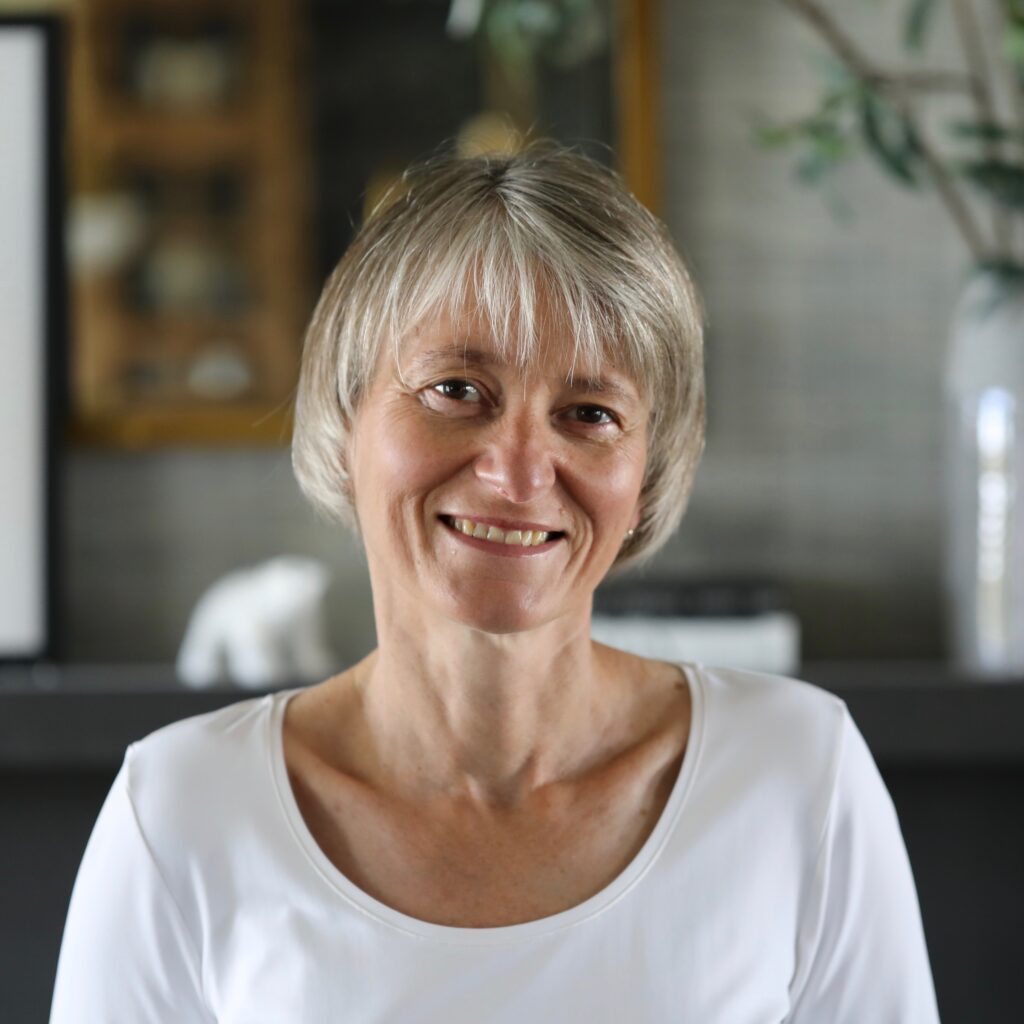
Gynecologic Oncologist, Saskatchewan Cancer Agency
Professor, College of Medicine, Division of Oncology, University of Saskatchewan
Provincial Lead for Gynecologic Oncology
Laura Hopkins always knew she wanted to be a doctor. Growing up on a beef cattle farm north of Napanee, Ontario, she enjoyed sewing, knitting and making lace. She attributes her proficiency as a surgeon to the eye-hand coordination she developed doing these crafts.
After completing medical school at the University of Toronto, Laura trained as a resident at McMaster University, where evidence-based medicine was first practiced. Described as one of the most important medical advances in the past 150 years, evidence-based medicine integrates the best research data with clinical expertise and patient values in order to use the best evidence to give patients the best possible care. Laura wanted to focus on clinical care and loved doing quality assurance projects to answer questions about how patient care could be improved. Her work to acquire evidence on how the use of antibiotics prior to cesarean delivery and the prophylactic prescription of anti-clotting agents for all cancer in-patients improved infection and clot rates was very rewarding – for Laura and for the patients who benefitted from these projects.
Laura sampled the field of electives during her residency and it was an obstetrician-gynecologist who served as the role model that led her to specialize in obstetrics and gynecology. “She was the first happy doctor I had met,” says Laura. “I never looked back after working with her.”
Laura was on a path to a career as a generalist obstetrician-gynecologist when she was encouraged to apply for a fellowship in gynecologic oncology. Gynecologic oncologists treat ovarian, cervical, uterine, and vulvar cancers and are a unique class of physicians who not only perform complex surgeries but also work with women through their entire course of treatment, including chemotherapy and palliative support. She was accepted to the program at the University of Toronto and says, “It was the right decision and best choice for me. There is immediate gratification in getting rid of a bad problem for a patient through surgery.”
Laura was recruited to Saskatchewan in September 2019 after 18 years at the Ottawa Hospital and the Faculty of Medicine at the University of Ottawa. During her tenure at the University of Ottawa, she published papers, participated in committee work and served as undergraduate director, post-graduate director and division head. After almost two decades of this work, she looked for a change from the focus on medical education and started doing locums, covering for physicians on leave in Halifax and Saskatoon.
In late 2018, Saskatoon lost both of its gynecological oncologists due to exhausting workloads that resulted in burnout. Another resigned in Regina in June 2019, leaving just one permanent gynecological oncologist practicing in Saskatchewan. When the province began recruiting new physicians, Laura expressed interest and was hired as program lead to create a provincial model of care guidelines, quality improvement initiatives and clinical trials. She set up clinical programs in Saskatoon and Regina, and hired five additional gynecological oncologists to staff those programs. She opened clinical trials for women with cancer for the first time in Saskatchewan, achieved the best surgical wait times for gynecologic cancer in Canada, and inaugurated a robotic surgery program. With research funding provided by the federal government, matched by the provincial government and made available through Ovarian Cancer Canada, Laura set up a biobank for ovarian tumor tissue and an academic program.
In September 2023, Laura launched the Saskatchewan Cancer Agency’s first investigator-initiated trial. This is the first pragmatic trial in Canada that will feature patients, oncologists, pathologists and scientists working together to deliver personalized treatment options and improve quality of life. Ovarian cancer patients’ tumors will be tested for mutations that predict response to a new class of drugs, providing accurate, personalized, genomic information about each patient’s tumor and helping patients make informed choices about their care. A total of 100 patients from across Saskatchewan will be enrolled in the 2.5-year trial. “For the first time, we will be able to give ovarian cancer patients very specific information about their chances of responding to treatment,” notes Laura. “When I was in training, we used to talk about “bench to bedside” and cutting-edge care. But I was trained to guess about what chemo drugs were going to work and in what order to administer those drugs. Now we work with scientists who can run a 1,200-drug panel against cancer cells to find the right drugs to kill those cells.”
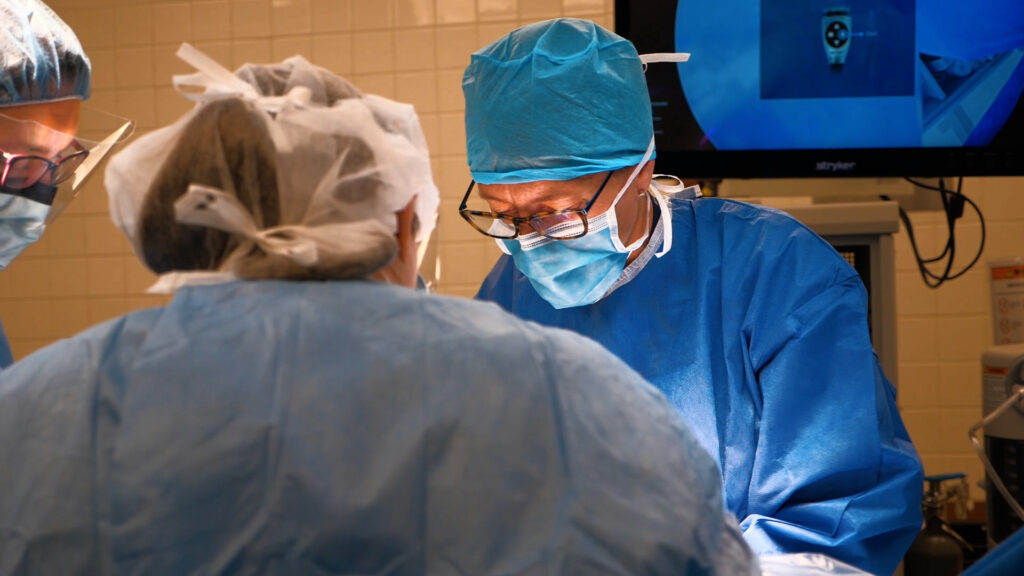
Laura Hopkins holds nearly $5 million in active research grants spanning surgical quality and safety, precision medicine and new technologies in oncofertility. She is a clinician, educator, researcher and successful leader in building a strong gynecological oncology clinical and research program and team in Saskatchewan. Patient care remains her priority. “My passion is to provide excellent, compassionate, timely care for my patients through all stages of treatment,” she says.

